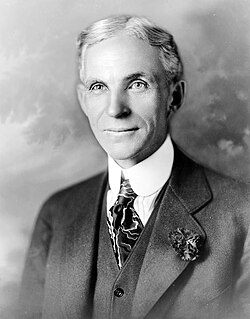[This article is part of the Painting for Tournaments article series.]
As mentioned in my last article, Painting the Darn Minis, I am going to talk a bit today about how to translate the skills used in painting a single mini to painting an entire army in a timely manner.
Let me start off with a disclaimer. No matter what, a well painted army is going to take time. If you are wanting a “Army painter in an hour” style fix, then perhaps a dipping article might be best for you. I honestly don’t prefer those things because unless they are done extremely well (which takes time and effort about equal to what I advocate), they look terrible. That said, making peace now with the fact that you will be working for a while helps things go a lot more smoothly.
*Entering ultimate nerd mode.*
*End ultimate nerd mode.*
That said, we can take a few things from assembly line ideology and apply them to painting to speed up the painting of an entire army.
As mentioned in my previous post, it took me about 45 minutes to paint Klod the Nob to a solid, tabletop quality. If we were painting models end to end, we are looking at creating an astronomically long and inefficient process. At that rate, it would take 7 and a half hours to paint 10 Nobz like Klod. Yuck!
By better using our time and supplies, we can drastically cut down that time using assembly line ideas.
#1) Paint several models at the same time. I find that 5-10 models is perhaps the optimum for assembly line painting. When I am crunched for time, I sometimes do more, but I like this range the best. I also find it best to organize my workspace to better paint these models. Keep them in a line, not bunched together so that you can tell which models have already received paint and which haven’t.
#2) Paint one color at a time. Put enough paint in your palette* to paint several models without running out. Make sure that every model gets a good even coat of that color before going on. Nothing is worse than finishing a color and moving on only to come to a model that looks like it did get coated well.
#3) Paint one element at a time. It is best to stick a more regimented process for assembly line painting. You don’t want to paint more of one model than the next. It allows an increased chance of missing some detail or element of a given model. Stick to one element at a time. This yields fewer errors.
*If you don't have a palette of some sort, you need one. They are good for many things, chief of which are adding water to paint so that it flows well (you need to do this for all paints) and for mixing colors to create different shades and/or hues.
These three ideas can do several things for you. The chief benefits of assembly line painting, though, are shortened time for painting models. Where painting one model might take 45 minutes, painting 5 with an assembly line method might take 1 and a half hours. It can reduce your time that much! This is because, the in-between times are cut down and getting more bang for your buck in regards to painting from color to color. It basically optimizes your time.
Assembly line painting also insures consistency across models. When painting models that are meant to look the same, this method really helps out, especially if you mix paint. Mixing paint is more art than science and by using an assembly line method you are more likely to get more models painted with the same exact shade of color. This can be a big deal in certain types of lighting.
Ultimately, if I have an entire army to paint, I revert to assembly line painting. This allows me to keep models consistent and save time. An effect of saving time is that you get painted models onto the tabletop quicker, which ultimately will provide you with more enjoyment. In a tournament environment, it will help you get those soft scores you need.
Other useful articles:
Why You Should Spend More Money on a Better Brush
Product Review: Simple Green
Why being a nice guy could be the best thing you do for the hobby
____________________________________________________________
Did you find this article useful? Subscribe to Gone to Ground for more great updates.


1 comment:
I have become a big fan of assembly line painting the "boring" stuff. I will usually prime, base coat, highlight and wash a large group of models at one time.
Then I will take small groups (1-5) and then paint the details on them.
I find that helps me not get burned out on the stuff I'm not too thrilled with, and it allows me to get some instant gratification. After the the base coat, highlights and wash is done, I can pump out a full Space Wolf in one evening, and feel like I've accomplished something as opposed to spending the evening painting all the Boltgun Metal on to 10-15 guys.
Nice article.
Post a Comment